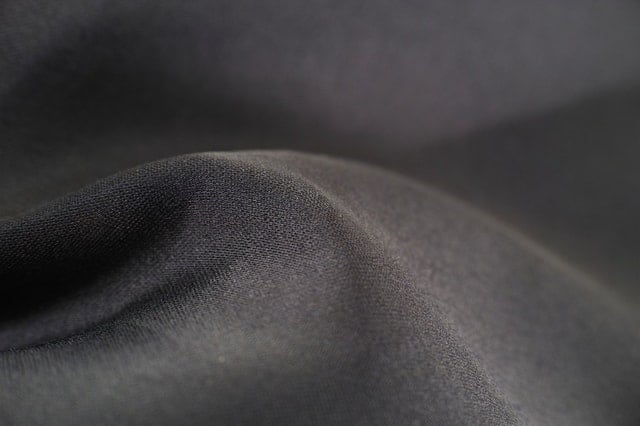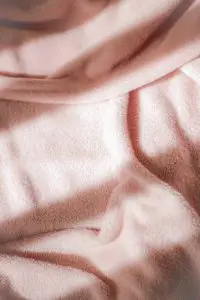Satin and velvet are soft fabrics we use in making varying textile products. However, there are many salient differences between these fabrics regarding their look, pattern, quality, usage, and other properties. You must understand the velvet vs satin differences. To help you along, this article covers these different and different types of velvet and satin in detail. By the end of this insightful comparison, you’ll be able to determine which fabric is most suitable for you.
What is Velvet?
Velvet is a luxurious fabric you can recognize by the dense pile of evenly cut fibers with a smooth nap. Velvet features a beautiful drape and a unique shiny and soft appearance because of the short pile fibers it features. Additionally, velvet fabric is quite popular for evening wear and dresses for special occasions. This is because the material is originally from silk. You can also use linen, cotton, wool, and many synthetic fibers to make velvet. However, this makes velvet fewer expenses for casual wear. You can also use velvet for home décor like curtains, upholstery fabric, pillows, etc.
What is Satin?
Satin is a significant textile weave in the same category as plain weave and twill. The satin weave creates a beautiful drape with a soft, shiny, and elastic fabric. The satin fabric is characterized by a lustrous surface that features a dull surface on the other side. This is due to a satin weaving technique. There are different variations on the satin weaves available to choose from.
What is the Origin of Velvet?
The first velvet was made from silk and was incredibly costly. Additionally, this velvet is only accessible to the royal and noble classes. People first discovered the material in Baghdad around 750 A.D. However, production quickly spread to the Mediterranean and promptly distributed the fabric throughout Europe.
A new loom technology significantly minimized the cost of production during the renaissance. During this period of production, Italy became the dominant velvet production center.
What is the Origin of Satin?
The velvet vs satin comparison isn’t complete without an insight into the origins of satin. Satin dates back to medieval China, where the users made it exclusively with silk. The weave began in the Chinese port city of Quanzhou. This was where the name satin originated. The fabric and weaving techniques of the satin were passed along the silk road until production became vast in the Middle East.
Additionally, Italy was the first Western nation to produce satin in the 12th century. Not long after, it became widespread across Europe in the fourteenth century. During this period, most of the furniture in the Palace of Versaille was satin.
What’s the Main Difference in the Velvet vs Satin Comparison
The most crucial difference in this velvet vs satin comparison is the two fabrics’ weave structure. On the one hand, satin is a weave with over four perpendicular yarns on a warp yarn. Any fabric that uses this weaving pattern is known as a satin fabric. However, the fabric material usually depends on the needs of the user. The varying weaving pattern provides your products with distinctive looks. While satin has a glossy finish, velvet has a raised and iridescent finish.
Velvet vs Satin – Warmth
The warmer option in the velvet vs satin comparison is velvet. Satin comes with a cooling effect, making it a top choice for many people. Most people prefer the products made with satin for hot weather conditions. On the other hand, velvet is a top fabric for winter wear. Many people would agree it is a wool alternative and is a much warmer option than satin.
Different Types of Velvet Fabric
Over the centuries, people have developed different velvet fabrics. Below are some significant types of velvet fabric you should note.
- Chiffon Velvet: This type of velvet is also known as transparent velvet. It is a sheer form of velvet primarily used for formal and evening garments.
- Crushed Velvet: This is a distinct type of velvet. It features a varied texture that you can achieve by pressing or twisting the velvet fabric when wet. Rather than a uniformed surface, the crushed velvet rises and falls organically.
- Embossed Velvet: This velvet comes with symbols, words, and shapes. It is slighter shorter than other velvet, and you can feel the embossing effect when touched.
- Hammered Velvet: This is a lustrous form of velvet that has been pressed and smashed rather than crushed. The result of this process is a dappled fabric reminiscent of a soft and warm coat.
- Lyons Velvet: This velvet is denser than other options and results in a stiff textile ideal for varying outerwear applications. Lyons velvet is considered among the leading luxurious outerwear materials used for hats and coats.
- Panne Velvet: Although the term ‘panne’ means several things, this term refers to a crushed velvet subjected to a single-direction thrusting moment. These days, Panne refers to velvet with a bunched appearance.
- Voided Velvet: This is a velvet pattern made from sections with and without piles. You can make different shapes and designs. This makes it quite similar to embossed velvet.
- Ring Velvet: originally, people only referred to velvet as ring velvet if you could draw it through a wedding ring. Ring velvet is usually light and aesthetically pleasing, like chiffon.
Different Types of Satin Fabric
Like velvet in this velvet vs satin comparison, there are also different satin fabric materials available to choose from. Below are the types of satin fabrics and how they differ.
Antique Satin Fabric
This refers to four or eight harness satin weaves that are unevenly spurned yarn in the weft. Most people use the antique satin fabric for making 17th and 18th-century silk blouses, evening wear, and many more. However, you must avoid washing them except by a professional to avoid damaging the fabric. This antique satin is usually home weight because we use it for acetate, rayon, etc.
Charmeuse Satin Fabric
This lightweight satin is woven using a weave that warps thread over four or more backing threads. These threads work to give the front of the fabric a soft and smooth finish. The charmeuse satin is quite different from the typical options because of its different proportion of floating threads. It is also lightweight. You can make the charmeuse satin using silk, rayon, or even polyester. Presently, mixed fiber is quite popular, especially in women’s clothing like blouses, evening gowns, lingerie, etc.
Duchess Satin Fabric
Duchess satin is elegant and ideal for couture bridal gowns and lingerie. It is unique and extensively differs from other types of satin because of its higher threads. Although it was pretty rare in the past, advancement in the textile manufacturing industry makes it more accessible. Today, it is amongst the most popular dressmaking fabrics available in the textile industry. It is 100% polyester and available in different colors.
Poly-Satin Fabric
This refers less to the elements and more to weaving the fabric. For example, suppose you produce satin weaves using fibers like nylon, polyester, and silk. In that case, the corresponding fabric is known as satin, even though some definitions imply it should be made of silk. Polyester fabric is popular for home décor and scarf designs. It is not raw material but a women’s fabric. Additionally, poly-satin features a luxurious, smooth, glossy, and silky fabric with a shiny side.
Velvet vs Sating – What are Satin Properties?
To understand satin in this velvet vs satin comparison, you must learn satin fabric properties. Satin is more of a weaving pattern, and the use of four or more weft yarn gives the fabric a mesh-like weave pattern. All fabrics using this weaving are known as satin fabric, and this fabric always features its signature smoothness. Unlike silk, satin always has a glossy shine on one side and a dull look on the other side. You can make it using cotton, silk, polyester, or wool. However, the most popular raw material used is silk and polyester. Below, you’ll find some of the prominent properties of satin.
- Synthetic: If you use polyester in its creation, the final product isn’t natural but somewhat artificial.
- Multiple Finish: While satin’s front is glossy and smooth, the back always features a dull finish.
- Hard to Maneuver: Satin fabric is slippery and can be challenging to use in tailoring. Only professional tailors work with this type of fabric.
- Maintenance: Satin usually requires a lot of care because of its delicate nature. You should only dry cleanse silk satins, and polyester satin should be gently hand-washed. Don’t even wring them to dry; simply hang them.
- Ironing: It’s pretty easy to burn the satin material. Therefore, you should only iron the dull side of this fabric at a low temperature.
Velvet vs Satin – What are Velvet Properties?
Velvet uses the pile weaving technique to provide its unique raised look. In the beginning, silk was the only raw material used. However, rayon and polyester are also quite popular today. Every type of velvet features a unique texture or look worth the effort. Some of velvet’s notable properties include:
- Touch and feel: Velvet is quite soft to the touch, and you usually feel the piled thread as you touch it.
- Unique quality: Velvet’s iridescent quality makes the color change when people run their hands over it.
- High Heat-Retention Quality: Velvet features good heat retention quality. Therefore, you can easily use it for many winter products like blankets, hats, blazers, etc.
- Maintenance: Maintaining your velvet is relatively easy. You shouldn’t wash using hot water; it is best hand-washed using cold water.
- Sheen: Although velvet is also popular for its shiny nature, it comes with a signature dull shine. It is quite unlike the gleaming shine of satin.
- Durability: Velvet is heavy and, therefore, quite a durable material.
A Great Online Class: Color Theory for Textile Projects by Domestika
If you are interested in learning more about how you can create a successful name for your business, we recommend taking a look at the online class “Color Theory for Textile Projects”.
The course is currently under promotion, but you can use the discount code: T_BROWNLEES-PROMO to get an additional 10% discount on your purchase.
This online class offered by Domestika, at a very inexpensive price covers all you need to know to develop your textile project by leveraging color theory to create the perfect color palette. If you apply to the course through the link below you’ll be supporting 440 Industries, and we thank you for it!
Final Thoughts
Velvet and satin have their specific purposes; it all depends on the user and the purpose they need the fabric for. This velvet vs satin comparison shed insight into the similarities of these fabrics and the different options available to you. To help you differentiate further, we provided insight into their unique qualities. We hope this makes it easier to determine which option is ideal for various occasions and purposes.








